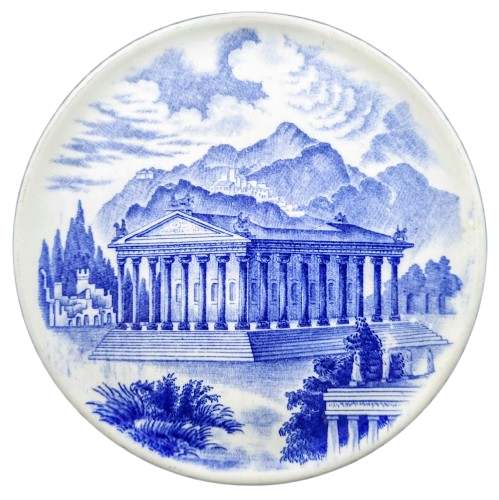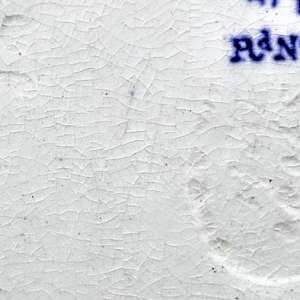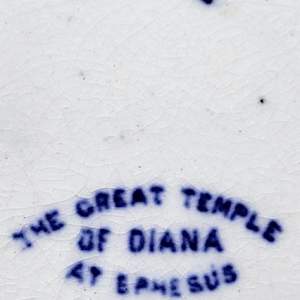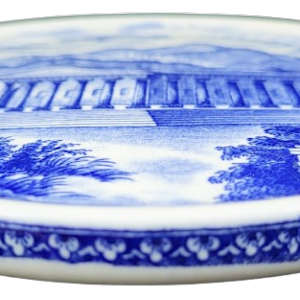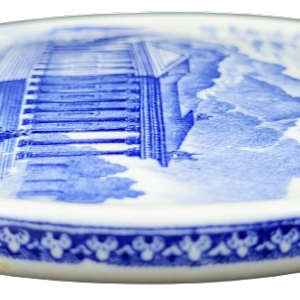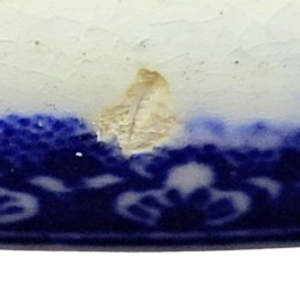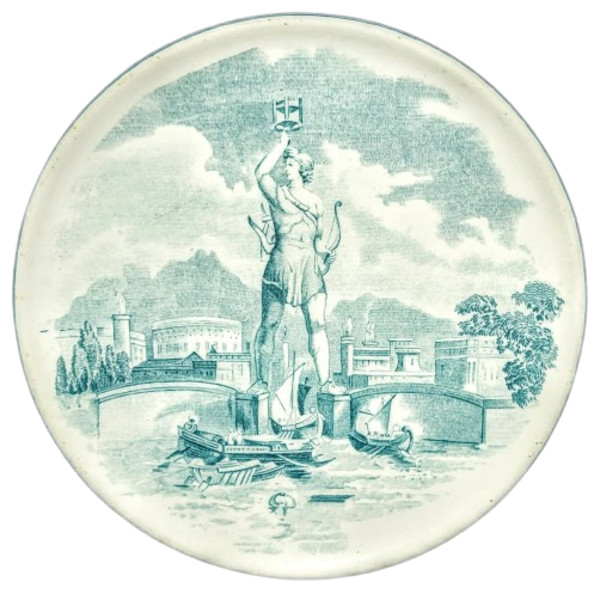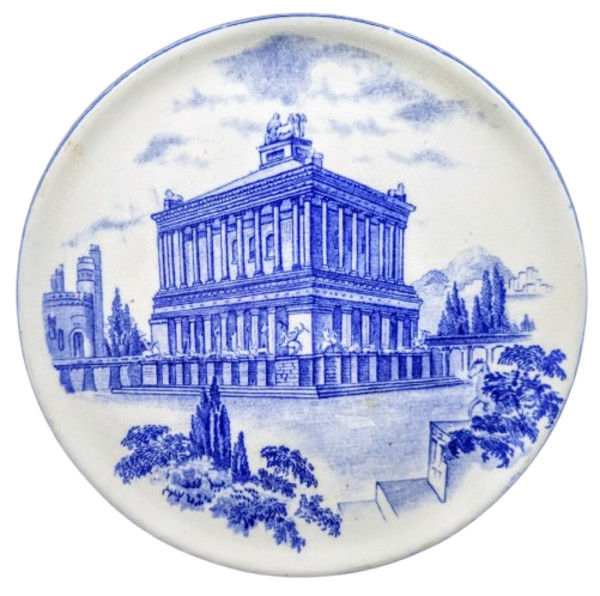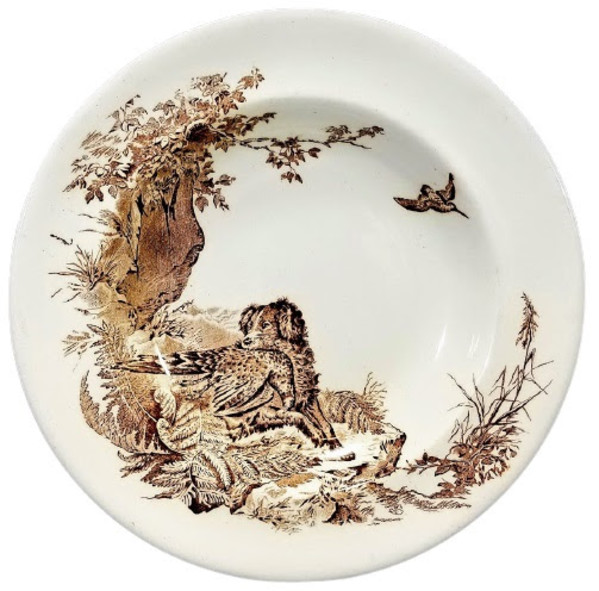- W. T. Copeland & Sons
- The Great Temple of Diana at Ephesus, Rd. 1898
- Earthenware
- 6.25 x 6.25 in (15.88 x 15.88 cm)
-
Not For Sale
Tile, 6.25 inches diameter. Blue transfer. Impressed maker's mark for W. T. Copeland & Sons. The Rd. No. indicates a pattern registration date of 1898. This is part of a series depicting the Seven Wonders of the Ancient World, registered 20 April 1898. The traditional list of the Seven Wonders was originally compiled by Philo of Byzantium in 225 BCE, as a selection of man-made sights for Greek travelers or tourists to see around the Mediterranean rim. The Temple of Artemis (whose Roman counterpart was Diana) was the third temple built on this site in the ancient city of Ephesus in western Turkey near the Aegean Sea. The previous temple was destroyed by an arsonist in 356 BCE; construction on this version began 323 BCE and continued for many years. The Temple of Diana is mentioned in Acts 19 in the New Testament when craftsmen who made statues of the goddess became afraid that Paul's missionary work in Ephesus threatened not only their livelihood but the honor of the Temple itself. It stood for nearly 600 years until being destroyed or badly damaged by invading Goths in 286 CE. Columns from the temple were used in the construction of Hagia Sophia and some of the statues and other decorative elements were used elsewhere in Constantinople.
W. T. Copeland was the only son of William Copeland, partner of Josiah Spode in the Stoke Potteries, of Staffordshire and of Portugal Street, London. He succeeded his father as head of the porcelain firm in Portugal Street, London and eventually bought out the interests of the Spode family in the business in the Potteries and London. He ran the business in partnership with Thomas Garrett between 1833 and 1847. After the dissolution of the Copeland and Garrett partnership, it traded as W.T. Copeland and Sons. (1847-1976). In 1866 Copeland was appointed china and glass manufacturer to the Prince of Wales.
- Subject Matter: Classical Inspired
- Collections: British Tiles, British Transferware (1800-1930), W. T. Copeland & Sons
